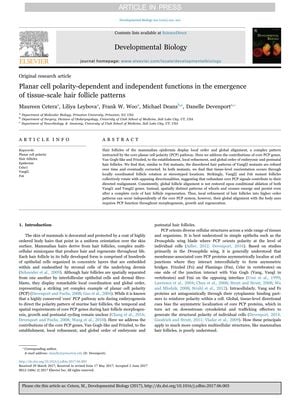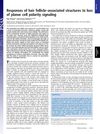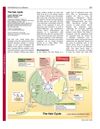Planar Cell Polarity-Dependent and Independent Functions in the Emergence of Tissue-Scale Hair Follicle Patterns
June 2017
in “
Developmental Biology
”

TLDR Mice can correct hair follicle orientation without certain genes, but proper overall alignment needs those genes.
The document presents findings from a study on the role of core planar cell polarity (PCP) genes, Vangl2 and Fz6, in hair follicle orientation in mice. The study showed that mutations in these genes led to disorganized hair follicle angles early on, but by postnatal day 7, the orientations were largely corrected, indicating that hair follicle alignment can be independent of these PCP genes. However, mice lacking both Vangl1 and Vangl2 exhibited persistent defects in hair follicle polarization, suggesting that while local coordination of follicles can occur without core PCP protein asymmetry, global alignment with body axes requires continuous PCP function. The study involved a range of animal sample sizes, with up to 6 control mice, 5 Vangl2 cKO mice, and 3 Fz6 KO mice, and cell and follicle counts ranging from 181 to 4076 cells and 374 to 406 follicles, providing a robust dataset for the conclusions.



